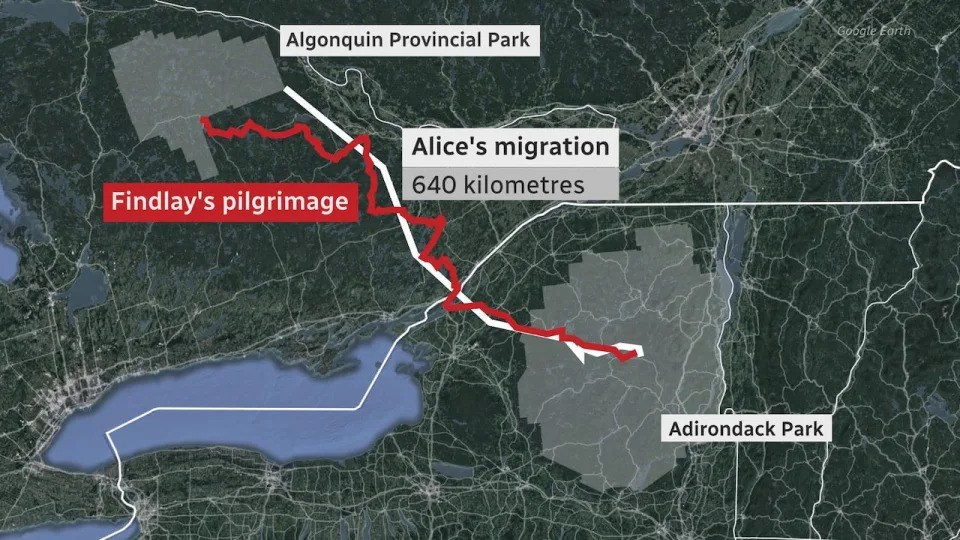Sun, September 24, 2023


By Maytaal Angel and Gus Trompiz
LONDON/PARIS (Reuters) - Europe's sugar beet growers are turning away from the crop in a move that could drive soaring prices even higher, as the EU's environmental rules clash with its bid to stem food inflation and secure supplies.
Farmers are switching crops after the European Union's top court ruled in January they can no longer be granted exemptions to a ban on so-called neonics - insecticides which protect against diseases like virus yellows in sugar beet but are toxic to bees and other pollinators vital to food production.
The ruling, which the bloc and environmental groups say is critical for safeguarding pollinators, some of which are currently threatened with extinction, has led to a cut in acreage devoted to sugar beet as crop yields suffer, farmers and industry experts told Reuters.
"In our region, we lost 15% of the (sugar beet) area (this year)," said Alexandre Pele, who has a 240 hectare farm in central France.
"I have struggled to meet volume commitments with the sugar factory because my yields have declined notably due to the ban on neonicotinoids," said Pele.
The EU is the third largest sugar producer in the world so a reduction in output could impact soaring global prices and frustrate efforts to bring food inflation down.
"We’ve entered a new paradigm in sugar, low prices are a thing of the past," said an analyst at one of the world's largest sugar traders. "Global stocks are low, demand is growing and supply is vulnerable all over the world due to climate change, due to the difficulty expanding production anywhere, not least Europe."
EU sugar prices are at their highest ever levels, roughly double prices seen two years ago, driven partly by an increased reliance on costly imports as the local sugar sector shrinks.
The European Commission expects sugar imports to have risen about 60% in the current season. The bloc relies on imported sugar, mostly subject to duties, for about 15% of its needs.Neonicotinoids were banned in Europe on non-flowering crops like sugar beet in 2018, but after a 2020 attack of virus yellows crushed output in France and Britain, EU member states granted temporary exemptions.
Since January's court ruling banning exemptions, the area devoted to growing sugar beet in France, the EU's largest sugar grower, has hit a 14 year low.
The European Commission said it expects the entire EU beet area to fall some 3% below a five-year average this year due to the ruling. The EU beet acreage has already fallen 17% percent since the 2018 neonics ruling, EU data shows.
The acreage fall led the world's second largest sugar producer Tereos to close a factory in northern France this year, losing 123 jobs. Tereos said at the time it was expecting to receive 10% less beet from farmers.
French grower Pele said he hasn't yet reduced his sugar beet crop because of the investment he's already made, but the yield from one of his plots is down by 45% this year.
One in 10 bee and butterfly species, critical for safeguarding biodiversity, are currently threatened with extinction, and environmental groups along with the EU pin much of the blame on neonics.
"The harm of neonics to pollinators is undeniable. They are the most studied pesticide in human history, and we know very well how they work," said Noa Simon Delso, scientific director at Beelife, a Brussels-based non-profit organisation.
Several seed makers, including Germany's KWS Saat are working on new sugar beet varieties that would be naturally resistant to virus yellows, but farmers say they may not be available until 2027.
By this time, those who have left the sector and sold costly equipment might be loathe to return.
"Consumers will have to appreciate if more constraints are put on farming, for good reason or not, the costs of production will increase until we find other methods to cultivate this food," said Andrew Blenkiron, who runs a 7,000 acre farm in the east of England, which thanks to Brexit, can use neonics this year.
He said he would move away from beet if he can't protect his crop.
"It's a dilemma - producing food at a cost effective price while ensuring we have good environmental protection," he added.
A shrinking sugar beet sector could hit other staple crops because farmers need to plant alternates like sugar beet or oilseeds on their wheat, barley and corn fields every other year in order to maintain soil health.
Oilseeds were one of the first crops targeted by the ban in late 2013, and rapeseed production has since fallen 12%.
"If I lose a crop like sugar beet, that's an agronomy (crop rotation) issue but also, because weather threats are multiple these days, having a number of crops allows me to better manage risk," said Pele. "If I no longer have sugar beet it would be a real loss."
(Reporting by Maytaal Angel;Editing by Elaine Hardcastle)
Link.springer.com

THE DARK TRUTH ABOUT SUGAR BEET
6th Dec 19
We all know sugar is bad for our health. But were you aware just how bad it is for our soil?
We all know sugar is bad for our health. But were you aware just how bad it is for our soil? Today, Feedback publishes a report uncovering the hidden damage growing sugar beet is doing to our soil.
In the UK we use over 100,000 hectares of prime agriculture land to grow a product we really need to eat less of: sugar. British Sugar, the monopoly company controlling the UK sugar beet industry refines around 7.6 million tonnes of sugar beet grown on English soils every year, turning it into over a million tonnes of refined sugar. And they have plans to expand, with a goal to increase production by 50%.
That much sugar sounds like pretty bad news from a health perspective, especially when you take into account that in the UK most adults consume double their recommended daily allowance. But it turns out there’s another casualty of all that sweet stuff: our soil.
Sugar beet is a hard-wearing crop on our soil. Harvesting it, especially late in the year when soil is wet, leads to large quantities of soil being lifted from the fields, stuck to the crop and to farm machinery. We’ve calculated that the sugar beet harvest caused an average soil loss of around 489,000 tonnes a year in the period 2014-2018. To put that in context, the UK’s total soil loss per year, excluding soil loss from harvesting, is estimated at 2.9 million tonnes – so the sugar beet harvest could be adding as much as 20% to our annual soil loss per year.
Consider the fact that it takes between 200 and 400 years to form 1cm of topsoil, and that soil is a resource at the very heart of our agricultural production. Surely, we should be doing everything we can to care for it?
It gets worse. Sugar beet is largely grown in East Anglia and the Midlands, in areas Natural England describes as having some of the best and most versatile land in the country. If we shrunk the area of land used to grow sugar beet by 40%, around the decrease needed to produce just enough sugar to meet our recommended daily allowance, we calculated that we could be growing 150,000 tonnes of peas, 3.1 million tonnes of carrots or 1.8 million tonnes of potatoes.
Once harvested, beet is delivered to one of four sugar beet refineries all owned by a single company, British Sugar. British Sugar is a monopoly: nearly 40 years after the state sold its stake in the company, the company remains the only buyer for the UK’s sugar beet growers, negotiating a fixed yearly price with NFU Sugar, the body representing UK beet growers. We asked British Sugar to comment on our estimate on sugar beet’s contribution to soil loss, but they did not respond to our request.
“We Welcome This Report, And Urge The Approach Outlined In It To Be Applied Across Our Entire Food System So That The Public Health And Environmental Impact Of The Crops We Grow Can Be Considered Alongside One Another – And Informed, Ambitious And Holistic Choices Made As A Result.” Ellen Fay, Director, Sustainable Soils Alliance
On the one side, two vital and finite resources: our land and our soils. On the other, our health, and the costs to the NHS of treating ill-health related to excessive sugar consumption. Spending on treating Type 2 diabetes alone comes to £8.8 billion per year. With the government adopting policies to incentivise lower sugar consumption, like the ‘Sugar Tax’, it seems nonsensical to continue to use significant area of land to grow sugar.
Sugar is bad for us, and it is bad for the land it is grown on. Yet amidst these challenges, British Sugar plans to grow production by 50% annually – potentially with grave potential effects for our health, land use and soils.
Today, the UK shareholders of Associated British Foods Plc (ABF), the parent company that owns British Sugar, meet for the companies Annual General Meeting. ABF is forecasting strong earnings growth next year, including in its sugar divison.
We hope our new report will open a new front in the fight to tackle our addiction to the sweet stuff. Between 2008 and 2018 (so, excluding the potential impact of the Sugar Tax, which kicked in April 2018), the average decline in sugar consumption has been just 0.2% annually – at this rate, it would take the UK 386 years to reach the WHO recommended daily sugar intake. Policy to address high sugar consumption through demand alone are failing. It is time to explore the potential to constrain supply of UK-grown sugar.
Such a move poses the opportunity to staunch the rapid erosion of UK soils, to incentivise production of healthy vegetables improving food security, and to orient agricultural policy around the twin goals of public health and planetary health. As well as reconsidering the sugar in our tea, it is time to reassess the role of sugar beet in our fields.
Read our full report.
TELL THE SUGAR INDUSTRY TO 'BEET IT'
Understanding the sugar beet holobiont for sustainable agriculture
Abstract
The importance of crop-associated microbiomes for the health and field performance of plants has been demonstrated in the last decades. Sugar beet is the most important source of sucrose in temperate climates, and—as a root crop—yield heavily depends on genetics as well as on the soil and rhizosphere microbiomes. Bacteria, fungi, and archaea are found in all organs and life stages of the plant, and research on sugar beet microbiomes contributed to our understanding of the plant microbiome in general, especially of microbiome-based control strategies against phytopathogens. Attempts to make sugar beet cultivation more sustainable are increasing, raising the interest in biocontrol of plant pathogens and pests, biofertilization and –stimulation as well as microbiome-assisted breeding. This review first summarizes already achieved results on sugar beet-associated microbiomes and their unique traits, correlating to their physical, chemical, and biological peculiarities. Temporal and spatial microbiome dynamics during sugar beet ontogenesis are discussed, emphasizing the rhizosphere formation and highlighting knowledge gaps. Secondly, potential or already tested biocontrol agents and application strategies are discussed, providing an overview of how microbiome-based sugar beet farming could be performed in the future. Thus, this review is intended as a reference and baseline for further sugar beet-microbiome research, aiming to promote investigations in rhizosphere modulation-based biocontrol options.
1. Introduction
The holobiont concept (Zilber-Rosenberg and Rosenberg, 2008) changed the view on microbes in many scientific disciplines. It states that practically all multicellular lifeforms are inhabited, depending on—or at least are affected by—the interplay with microbial life. The collective genome of plant-associated microbiota exceeds the host genome in both size and number of functions by far and is thus referred to as its second genome (Berendsen et al., 2012; de la Fuente Cant et al., 2020). Given the importance of plant-associated microbes for the health, vigor, and resilience of their host, the microbiome of plants and its modulation is a potential key factor for crop management and crop development in the future (Berg et al., 2015, 2021; Mendes and Raaijmakers, 2015).
Sugar beet (Beta vulgaris ssp. vulgaris, L.) is the most important regional source of sucrose in moderate climates of the northern hemisphere. Its biomass production is ranked eighth amongst the most produced field crops worldwide (FAOSTAT, 2022). Sugar beets are biennial, meaning that flowers and seeds are produced in the second year. Since flowering detracts sucrose from taproots, sugar beets are harvested annually. The wild ancestor of all beet crops is the sea beet (Beta maritima L.), a native plant still frequently found on European coastlines. Sugar beet thrives on most soil types, as long as pH is near neutral, easing its geographically widespread cultivation (Draycott, 2003). In contrast to many other crops, the breeding of sugar beet out of the Silesian Beet happened in times when the basics of genetics were understood. Therefore, its development and breeding trends over the decades are comparably well documented (Panella and Lewellen, 2007). Early sugar beet cultivars were bred in Northern Europe, a region with a non-humid, temperate climate and low pest and disease pressure. When these cultivars were planted in other regions, the yield was severely decimated by pests and pathogens (Panella and Lewellen, 2007). Sugar beet was intensively studied regarding physiology, anatomy, chemical, biochemical constitution, genomic traits, nutrient requirements, and convenient agricultural practices to optimize yield in the last 150 years, and was first genome sequenced in 2014 (Dohm et al., 2014). Still, leaf pathogens, root and storage rots, and microbes interfering with sucrose extractions illustrate the importance of sugar beet-associated microbial communities for both plant health and yield. All these mentioned facts make sugar beet an interesting model plant for microbiome research.
Despite the widespread cultivation of sugar beet, our knowledge in sugar beet microbiomes and microbiome-based strategies in future agricultural systems have not reached their full potential thus far. To fully exploit this potential for crop protection and plant growth promotion (PGP), a deep and holistic understanding of both the plant itself and the environment-plant interactions is crucial. Since the rhizosphere is the primary soil-plant interface, we have to especially emphasize the establishment, formation, and dynamics of its microbiome in this context. We hereby try to connect current knowledge about sugar beet-associated microbial communities to their physical, chemical, and biological context, namely the specific traits of the host plant. We aim to describe the sugar beet holobiont as defined by Berg et al. (2020), as the entirety of the microbial community members and its “theater of activity”. In the first section of this review, we will provide an overview of the current knowledge on sugar beet microbiome to be considered in experimental setups of future studies, highlight knowledge gaps, and discuss the sugar beet holobiont following its ontology from seed to postharvest roots. The second section summarizes potential or already tested biocontrol agents and their natural occurrence in the plant host and presents the current application strategies for microbiome-based agricultural practices.
Simplified temporal (Left) and spatial (Right) holobiont model of sugar beet taproot. The arrow width indicates the relative importance of vertically and horizontally assembled endophytes (Top Left). A: Root exudation and/or endophyte release leads to an increase in measured diversity in taproot-associated rhizosphere communities (Zachow et al., 2014; Cardinale et al., 2020; Wolfgang et al., 2020). CFU number in the peel can exceed the CFU number in the rhizosphere (Okazaki et al., 2014). B: Relative sugar content increases toward the center, higher in proximity to vascular bundles. Sucrose further decreases with increasing distance to the secondary cambia (Milford, 2006; Hoffmann and Kenter, 2018). C: Diversity decreases toward the center, while the relative abundance of copiotrophic bacteria increases (Lilley et al., 1996; Okazaki et al., 2014). D: Microbial abundance is highest in the root elongation zone near the root tip, with a high relative abundance of exudate responders, e.g., Variovorax and Pseudomonas (Jacobs et al., 1985; Lübeck et al., 2000; Shi et al., 2009a). E: The sugar content of beet tissue is highest in lower taproot (Milford, 2006).






























